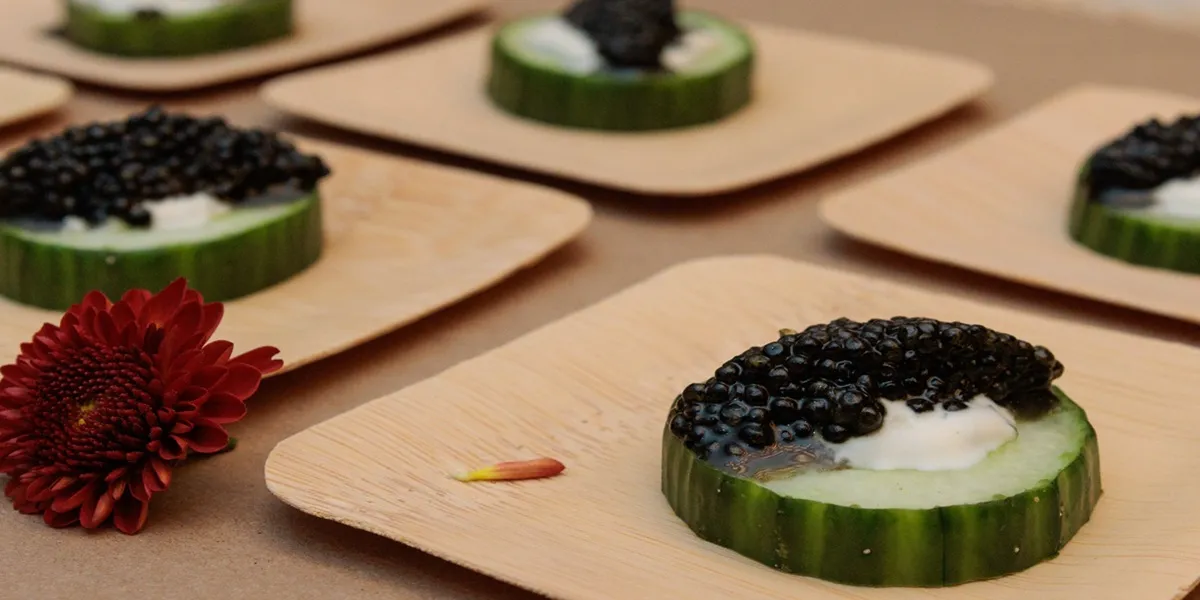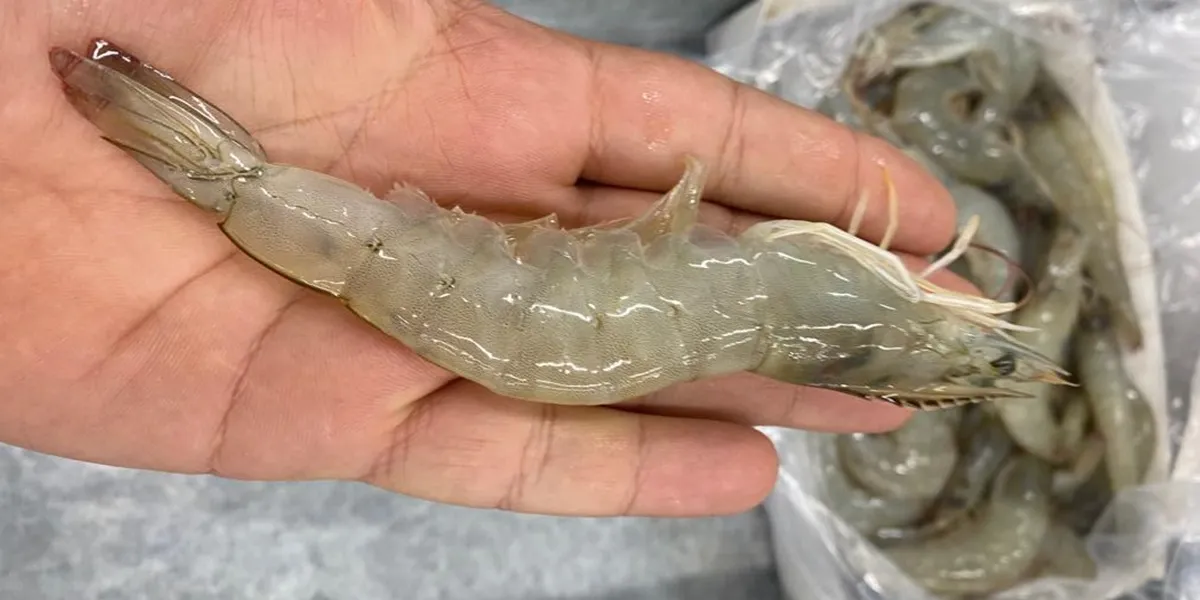When it comes to indulgence with integrity, nothing compares to Pristine Caviar. Sourced from non-GMO sturgeon raised in controlled, sustainable environments, this delicacy embodies the perfect union of environmental responsibility and refined taste. With growing global awareness around food safety, animal welfare, and ecological impact, consumers are seeking more than just flavor — they demand transparency, purity, and ethical production.
Pristine Caviar isn’t just another gourmet product — it’s a symbol of innovation in aquaculture. Produced using advanced, eco-conscious farming methods that protect biodiversity and minimize water usage, it offers both peace of mind and exceptional nutritional value. Rich in omega-3 fatty acids, vitamin B12, and essential minerals, this caviar nourishes the body as much as it delights the palate.
If you’re curious about how non-GMO sturgeon are raised, what makes Pristine Caviar nutritionally superior, and how it supports marine conservation efforts — keep reading. This guide explores the key varieties, science-backed benefits, and sustainable future of ethical caviar.
Beluga, Osetra, and Beyond: Exploring the Main Types of Pristine Caviar
Pristine Caviar comes in several celebrated varieties, each offering a unique sensory profile and ecological story. Among the most prestigious is Beluga, known for its large, glossy pearls and buttery texture. Sourced from non-GMO Huso huso sturgeon raised in strictly controlled, closed-loop systems, Beluga caviar combines delicacy with eco-conscious farming.
Next is Osetra, often regarded as the connoisseur’s choice. With a firmer texture and a nutty, rich flavor, Osetra caviar is harvested from Acipenser gueldenstaedtii sturgeon fed on non-GMO diets and raised without hormones or antibiotics. Its deep golden to dark brown hues offer both visual and taste sophistication.
Sevruga, smaller in grain but bold in flavor, completes the trio. It’s perfect for those who seek a briny, intense bite. Though less visually dramatic, Sevruga delivers a punch of flavor in ethically farmed form, thanks to fast-growing sturgeon species like Acipenser stellatus.
These types aren’t just labels — they’re the result of advanced aquaculture protocols that blend species preservation, traceable sourcing, and eco-friendly practices. All three are raised in environments that mimic natural conditions while maintaining full control over water quality and feed safety.
By understanding the differences among Beluga, Osetra, and Sevruga, you can select a caviar that fits your taste preferences while aligning with sustainable values. Each variety tells a story of science, responsibility, and craftsmanship — a true harmony of nature and innovation.
Why Iranian Caviar Remains the Gold Standard in Global Caviar Markets
Iranian caviar has long been recognized as the finest in the world, thanks to its exceptional texture, flavor, and purity. Sourced primarily from the Caspian Sea, Iran’s sturgeon species — including Beluga, Osetra, and Sevruga — produce roe that is unmatched in both taste and quality. What sets Iranian caviar apart is a combination of natural environmental factors and centuries-old expertise in processing and preservation.
In modern times, responsible Iranian producers have transitioned to more sustainable aquaculture practices, raising sturgeon in inland facilities using clean, non-GMO feed and controlled water systems. These methods not only help protect endangered wild populations but also ensure year-round access to premium-grade caviar.
For those seeking authentic, high-quality caviar that carries a legacy of tradition and precision, Iranian caviar remains the benchmark. Its consistent pearl size, creamy finish, and balanced salinity have made it a favorite among Michelin-star chefs and discerning gourmets worldwide.
Whether served on a blini, paired with fine champagne, or enjoyed by the spoonful, Iranian caviar brings elegance and depth to any occasion — while reflecting a commitment to sustainability and artisanal excellence.
The Journey of Caviar: From Ethical Farming to Exquisite Taste
Caviar is more than just a delicacy — it’s a product of meticulous care, time, and environmental responsibility. Today, sustainable aquaculture plays a critical role in how caviar is produced, especially as wild sturgeon populations in major lakes and rivers continue to face threats. Ethical farming methods now allow sturgeon to be raised in clean, controlled environments without genetic modification or ecological disruption.
The result is caviar that is not only rich in flavor but also traceable, safe, and environmentally sound. From egg incubation to roe extraction, every step in the process respects both animal welfare and ecological integrity. These modern farms mimic natural habitats while using advanced water filtration and non-GMO feed to maintain optimal fish health.
As the demand for clean-label and transparent products increases, this new generation of caviar provides a luxurious experience with a clear conscience. It’s no longer just about indulgence; it’s about making mindful choices.
So, whether you’re savoring Beluga, Osetra, or Sevruga, you’re not only enjoying a gourmet experience — you’re supporting a more responsible and forward-thinking way of producing one of the world’s most prized foods.

What Makes High Quality Caviar? Key Indicators of Purity and Taste
High quality caviar is defined by more than just price or appearance — it’s the result of precise farming, careful handling, and stringent quality control. Several characteristics distinguish premium caviar: uniform grain size, firm yet delicate texture, glossy sheen, and a flavor profile that is rich but not overly salty.
Equally important is the way the sturgeon are raised. Ethical farms use non-GMO feed, pure water systems, and natural maturation processes, allowing the fish to develop roe with a cleaner, more complex taste. These farms often adopt closed-loop recirculating systems that eliminate contamination risks and allow for year-round consistency in production.
Another crucial factor is freshness.High quality caviar should be minimally processed with as little salt as possible — a method known as “malossol” — to preserve the natural characteristics of the eggs.
Proper cold-chain storage from farm to consumer ensures the product retains its texture and nutritional value. When handled correctly, each spoonful of high quality caviar offers a smooth burst of flavor, buttery finish, and lingering complexity that speaks to its craftsmanship.
Ultimately, great caviar is a harmony of nature, science, and artisanal care — and discerning consumers can taste the difference in every bite.
Unlocking the Health Benefits of Caviar: Nutrition Meets Luxury
Health benefits of caviar: Caviar isn’t just a luxurious treat — it’s also a nutritional powerhouse packed with essential nutrients. Rich in omega-3 fatty acids, vitamin B12, selenium, and high-quality protein, caviar offers a wide range of health benefits that support heart, brain, and immune function.
The omega-3 content in caviar is particularly noteworthy. These fatty acids help reduce inflammation, improve cardiovascular health, and support cognitive performance. Studies also link regular omega-3 intake to lower risks of depression and improved mood balance. For pregnant women, omega-3s in caviar can support fetal brain development.
Vitamin B12, abundant in caviar, plays a vital role in red blood cell formation, energy production, and nervous system health. Additionally, selenium and other trace minerals contribute to antioxidant defense and thyroid function.
What makes caviar exceptional is the purity of its nutrient profile, especially when sourced from non-GMO, sustainably raised sturgeon. The absence of harmful additives, antibiotics, or environmental toxins means that each serving delivers concentrated nutrition with minimal health risks.
In moderation, caviar can be a smart addition to a balanced diet — offering both indulgence and scientifically supported health benefits in one exquisite bite.
A Closer Look at the Types of Caviar: Texture, Color, and Taste
Understanding the Types of caviar is key to appreciating its diverse flavors and culinary applications. The three most prominent types — Beluga, Osetra, and Sevruga — each offer a distinct experience.
Beluga caviar comes from the largest sturgeon species and is famous for its large pearls, light grey to black color, and buttery flavor. It’s considered the rarest and most luxurious type, prized for its delicate, creamy finish.
Osetra caviar has medium-sized eggs and varies in color from gold to dark brown. Its nutty, robust flavor and firmer texture make it a favorite among seasoned caviar lovers and chefs seeking complexity.
Sevruga caviar, while smaller in size, is bold in flavor — offering a briny, oceanic profile that’s perfect for those who enjoy intensity.
Modern sustainable farms also produce hybrid varieties and rare types like Kaluga and Siberian caviar, each with their own nuances in flavor and texture.
By exploring different types of caviar, consumers can find profiles that suit specific dishes or occasions — from light appetizers to elegant entrées.
Whether you’re new to caviar or an experienced connoisseur, understanding its types helps elevate your tasting journey.
Caspian Caviar: Legacy, Innovation, and Marine Conservation
Caspian Caviar has been the gold standard for centuries, shaping global perceptions of luxury and quality. Sourced from the Caspian Sea — home to the world’s most prized sturgeon species — it reflects a deep cultural and ecological heritage. Historically, this region has been synonymous with Beluga, Osetra, and Sevruga, producing caviar known for its unrivaled texture and taste.
Today, as concerns about overfishing and sturgeon extinction rise, producers in the Caspian region have embraced more sustainable aquaculture practices. By transitioning to inland, closed-system farms that replicate the Caspian environment, these producers ensure the long-term viability of caviar production while protecting native ecosystems.
Caspian Caviar now represents both tradition and innovation. While it retains the sensory excellence of the past, it also leads the future in eco-conscious production, non-GMO feed use, and biodiversity preservation.
For those seeking authenticity with accountability, Caspian Caviar delivers. It’s more than a luxury item — it’s a testament to sustainable craftsmanship and a global symbol of refined, responsible taste.
Pristine Caviar vs. Traditional Caviar: A Scientific and Culinary Comparison
Pristine caviar distinguishes itself from traditional caviar through its commitment to sustainability and purity. While traditional caviar often originates from wild-caught sturgeon, raising concerns about overfishing and environmental impact, Pristine Caviar is sourced from sturgeon raised in controlled aquaculture environments. These settings ensure non-GMO feed, absence of antibiotics, and minimal ecological disruption.
From a culinary perspective, Pristine Caviar offers a consistent flavor profile, free from contaminants that can affect taste. The controlled conditions allow for precise monitoring of water quality and diet, resulting in caviar with a clean, buttery flavor and firm texture. In contrast, traditional caviar’s flavor can vary due to uncontrolled environmental factors and the sturgeon’s diet in the wild.
Nutritionally, Pristine Caviar maintains high levels of omega-3 fatty acids, vitamin B12, and essential minerals, thanks to the sturgeon’s balanced diet and stress-free environment. This consistency ensures that each serving delivers the anticipated health benefits without the risk of pollutants often found in wild-caught alternatives.
In summary, Pristine Caviar offers a reliable, ethical, and high-quality option for consumers seeking both luxury and responsibility in their culinary choices.
Who Buys Pristine Caviar? From Michelin-Starred Chefs to Wellness-Conscious Consumers
The appeal of Pristine Caviar spans a diverse clientele, united by a shared appreciation for quality, sustainability, and health. Michelin-starred chefs are among the foremost advocates, valuing the caviar’s consistent taste and ethical sourcing. Its reliable flavor profile allows for precise culinary applications, essential in high-end gastronomy.
Health-conscious consumers also gravitate towards Pristine Caviar. The assurance of non-GMO feed, absence of antibiotics, and controlled farming conditions align with their dietary preferences. Moreover, the caviar’s rich content of omega-3 fatty acids and vitamin B12 supports cardiovascular health and cognitive function, making it a nutritious indulgence.
Environmental advocates appreciate Pristine Caviar’s commitment to sustainable aquaculture. By choosing products that prioritize ecological balance and species preservation, they contribute to the broader effort of protecting marine biodiversity.
Retailers and specialty food stores recognize the growing demand for ethically sourced luxury foods. Stocking Pristine Caviar caters to a market segment that values transparency, quality, and environmental responsibility.
In essence, Pristine Caviar resonates with a wide audience, from culinary professionals to discerning consumers, all seeking excellence without compromising on ethics or health.
How to Store and Serve Pristine Caviar for Maximum Flavor and Freshness
Proper storage and serving techniques are crucial to preserving the delicate flavors and textures of Pristine Caviar. Upon receipt, caviar should be stored in the coldest part of the refrigerator, ideally between -2°C and 0°C. This temperature range slows down oxidation and maintains the caviar’s freshness.
When serving, it’s essential to use non-metallic utensils, such as mother-of-pearl or horn spoons, to prevent any metallic taste from transferring to the caviar. Serving the caviar in its tin over crushed ice helps maintain the optimal temperature during consumption.
Pristine Caviar’s nuanced flavors are best appreciated when served simply. Traditional accompaniments include blinis, crème fraîche, or lightly toasted bread. These neutral bases allow the caviar’s taste to shine without overpowering it.
It’s advisable to consume the caviar shortly after opening, as exposure to air can degrade its quality. If necessary, an opened tin can be covered tightly and stored in the refrigerator for up to two days, though freshness is best when consumed immediately.
By adhering to these storage and serving guidelines, one can fully experience the luxurious taste and texture that Pristine Caviar offers.
The Future of Caviar: Innovations in Aquaculture, Genetics, and Eco-Packaging
The caviar industry is undergoing significant transformations, driven by advancements in aquaculture, genetics, and sustainable packaging. Innovations in recirculating aquaculture systems (RAS) have revolutionized sturgeon farming, allowing for precise control over water quality, temperature, and feed, leading to healthier fish and higher-quality caviar.
Genetic research is contributing to the development of sturgeon strains that mature faster and are more resistant to diseases, reducing the need for antibiotics and enhancing sustainability. These advancements ensure a stable supply of caviar without compromising environmental integrity.
Eco-friendly packaging solutions are also emerging, with producers adopting biodegradable materials and recyclable tins. This shift not only reduces the environmental footprint but also appeals to environmentally conscious consumers.
Furthermore, blockchain technology is being explored to enhance traceability in the caviar supply chain, providing consumers with transparent information about the product’s origin, farming practices, and quality standards.
These innovations collectively signify a future where caviar production aligns with ecological responsibility, technological advancement, and consumer demand for transparency and sustainability.
Where to Buy Authentic Pristine Caviar: A Guide to Verified, Transparent Sources
Purchasing authentic Pristine Caviar requires sourcing from reputable suppliers committed to transparency and quality. Look for vendors who provide detailed information about their farming practices, including the use of non-GMO feed, sustainable aquaculture methods, and absence of antibiotics.
Certified producers often hold accreditations from recognized bodies, ensuring adherence to environmental and quality standards. It’s advisable to seek out suppliers who offer traceability, allowing consumers to verify the caviar’s origin and production methods.
Online platforms specializing in gourmet foods may offer Pristine Caviar, but it’s crucial to research the vendor’s credibility, customer reviews, and return policies. Direct purchases from established aquaculture farms or specialty retailers with a focus on sustainable seafood are also reliable options.
By choosing verified sources, consumers can enjoy Pristine Caviar with confidence, knowing they are supporting ethical practices and receiving a product of the highest quality.
Conclusion Title: A Clean Taste of the Future — Caviar with Conscience
Pristine Caviar represents a bold shift in how we define luxury. No longer is indulgence measured by extravagance alone — today, it’s about making informed choices that honor both health and the planet. By choosing caviar from non-GMO sturgeon raised sustainably, you’re supporting farming systems that reduce ecological harm, prevent overfishing, and maintain the purity of aquatic ecosystems.
Unlike conventional caviar that may come from uncertain sources or questionable practices, Pristine Caviar offers transparency. It’s farmed with scientific precision, adhering to high standards of animal welfare, water management, and feed purity. At the same time, it delivers uncompromised taste and premium nutritional benefits.
Whether you’re a gourmet enthusiast, a chef seeking ethical ingredients, or simply someone committed to clean eating, this is the future of caviar. It’s time to elevate your palate — and your principles — with every spoonful.
Explore the full story behind each variety, and learn how Pristine Caviar delivers on its promise of purity and sustainability.




